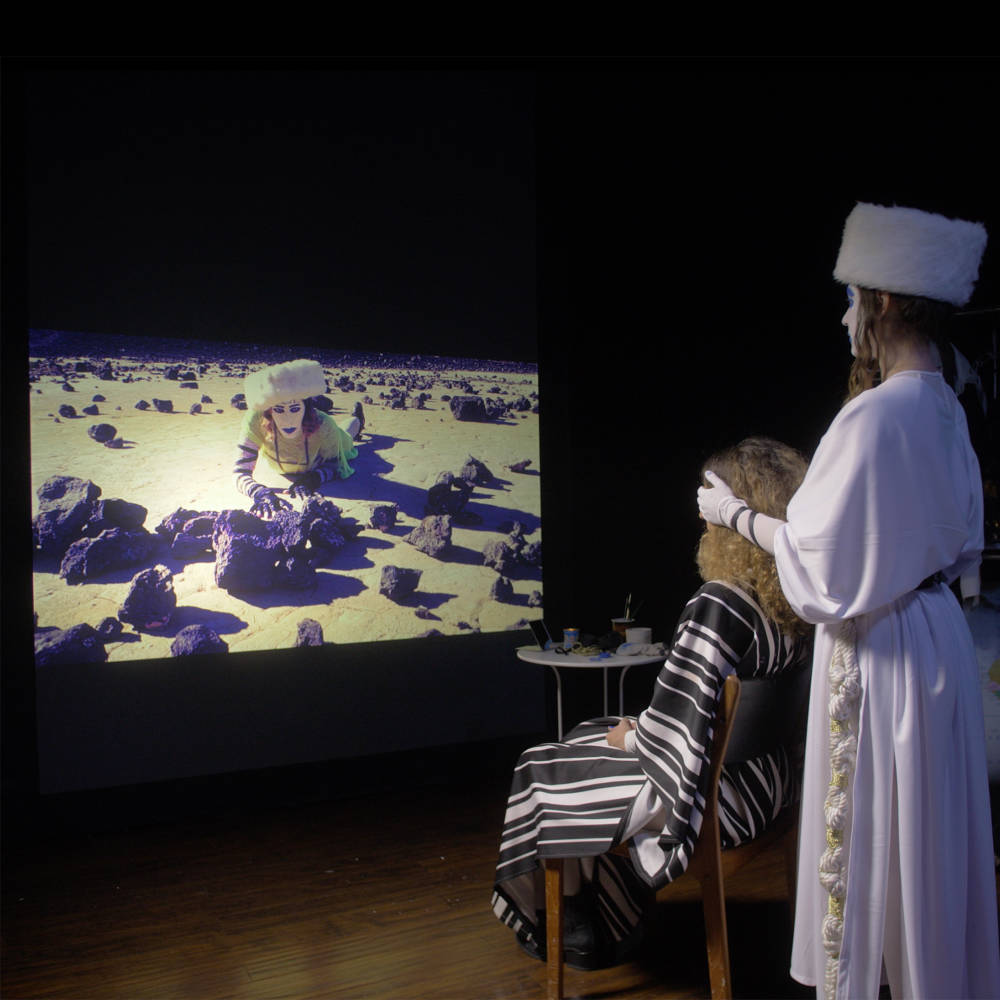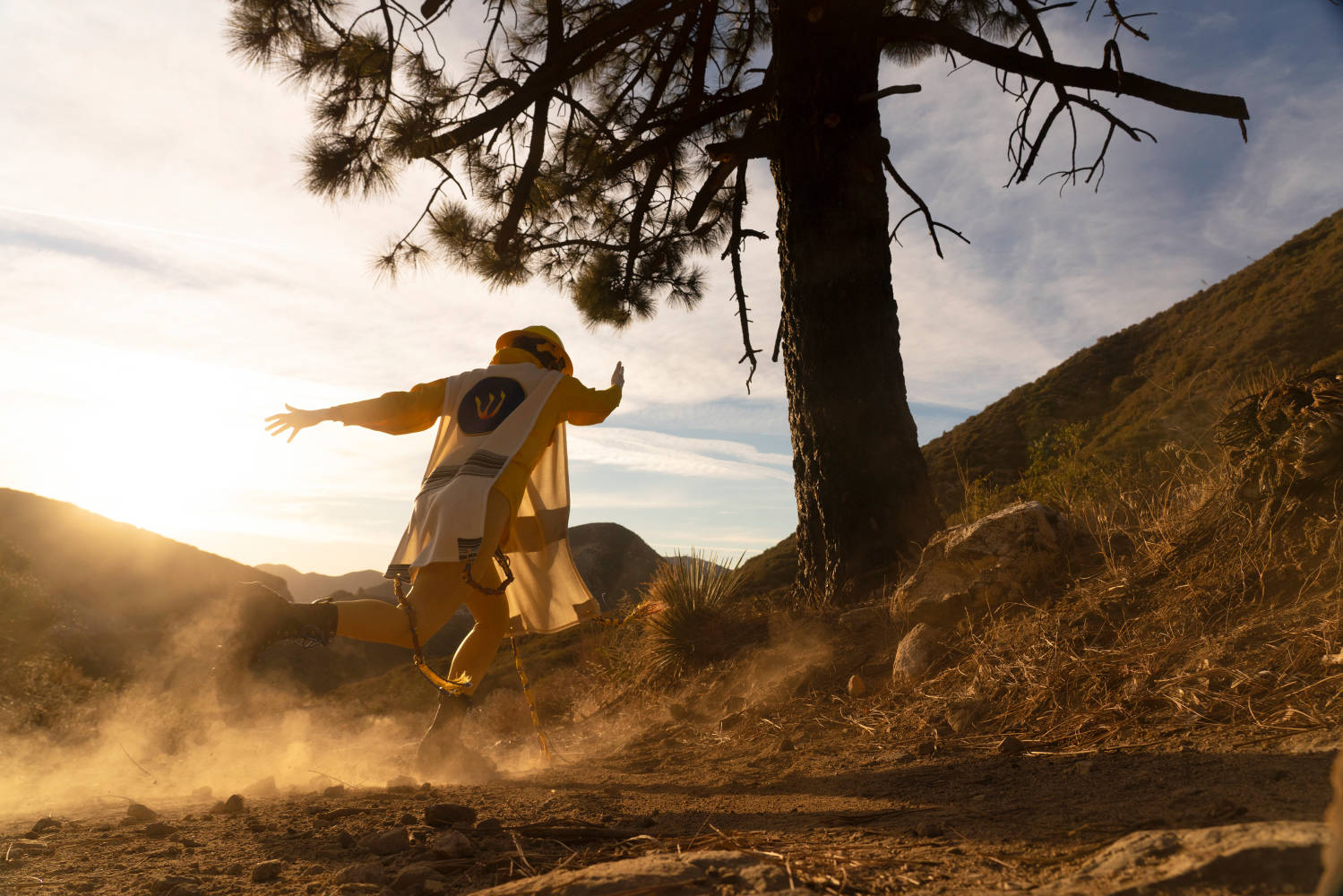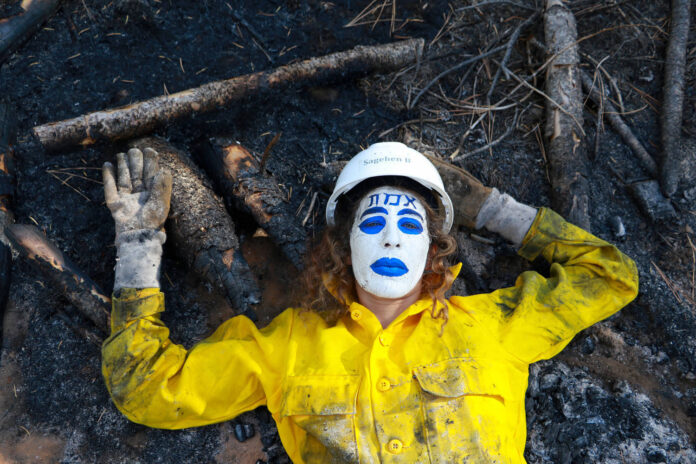In “GOLEM: A Call to Action” (through December 5), The Contemporary Jewish Museum presents three videos by Los Angeles artist Julie Weitz. All of the videos available online; “Wildland Firefighter” (2021) and “Prayer for Burnt Forests” (2021) are installed in the museum. In her ongoing series of performative videos, Weitz cunningly employs bold and comedic costumes and gestures to fuse cinematic history, sacred rituals, and environmentalism.
As an anthropomorphic being made from clay, a golem is literally and metaphorically of the earth. Emerging from Medieval Jewish mythology, the golem represents benevolence and guidance to Jews as they have endured centuries of xenophobic displacement, injustice, and tragedy. In response to the challenges of recent years, Weitz has taken absurdist liberties in creating her own golem. With this “Golem” played by Weitz, the character operates as double, where she/it navigates being a human-like outsider that walks amongst us.

As a mixture of work-wear, so to speak, Weitz’s Golem dons a highly visible safety-yellow shirt and hardhat, logger boots, and a Jewish prayer shawl. With her/its vibrant blue eyes, lips, and Hebrew lettering on her/its helmet and face, Weitz references tekhelet, a significant blue dye representing nobility and sky—notably used in the flag of Israel and tallit, prayer shawls. Golem’s prominently colored, specialized garments fuse the labor of religion and firefighting to suggest that visibility and the sky, or heavens, are routes to safety.
Shot in the Tahoe National Forest, in “My Golem as a Wildland Firefighter” (2021) Weitz enlists Golem in forestry service. The video features Golem unwinding a rather small garden hose through a vast forest. After a struggle, the hose ends up repeatedly wrapped around Golem. As Golem and the hose are bound in a knot, both are rendered ineffective in a comedy of errors that evokes Charlie Chaplin’s “Modern Times” (1936). Like Chaplin’s hallmark satire of capitalism and fascism, Weitz poignantly brushes up against the absurd, and even the profane, to inject some joy into our troubled moment.

In “Prayer for Burnt Forest” Weitz moves her narrative to grieving and healing. Using her/its bare hands, Golem digs a circle in the dirt to suggest a fire break, but also a spiritual circle of protection. With the circle echoed in the gallery’s carpet, Weitz generously extends the video’s safe and sacred space to viewers as a bridge between filmic and lived spaces.
Bridging religious ritual and ecological stewardship, Golem drapes her/its prayer shawl over a fallen tree. With the tree’s horizontality suggesting death, Golem provides a religious rite for the departed. With Golem originating from clay and the dead tree beginning its decomposition process, Weitz astutely alludes to a kinship and cycle between the natural world and beings.
As we enter wildfire season with trepidation and continue to repair social traumas, Weitz speaks to the urgency to protect the environment, self, and communities. Most refreshingly, Weitz’s exaggerated narrative and stylization creates a comical space that merges the spiritual and environmentalism, where both attempt to protect and manage fire’s generative and destructive potential.
“GOLEM: A Call to Action” runs through December 5) at The Contemporary Jewish Museum. More info here.





